EXPLORING MONTAUBAN, CAPITAL OF THE TARN-ET-GARONNE
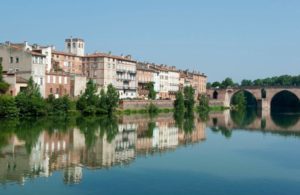
Formerly part of the provinces of Quercy and Languedoc, this Occitanie region in the southwest of France is traversed by the Garonne and Tarn rivers from which it takes its name. It’s one of the most picturesque agricultural départements of the country. For the visitor, there are charming medieval villages and towns to explore, plus the great draw-card of outstanding gastronomic delights, including game and poultry, fine local wines, and in particular the local specialty, Armagnac.
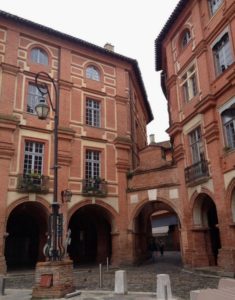
A good base to start exploring this area is the thriving departmental prefecture town of Montauban, just an hour’s drive north of Toulouse. The second-oldest of the bastides (medieval fortified towns) of southern France, Montauban’s graceful red brick architecture glows pink in the sunshine. Its fine buildings tell of the town’s turbulent history of sieges and battles, especially those fought during the Wars of Religion in the 16th century, when firmly protestant Montauban was the headquarters of Huguenot rebellion and had declared itself to be an independent republic.

Damage caused by cannonballs during a royal siege of 1621 can still be seen on one of the few remaining medieval buildings, the Église Saint-Jacques. In honour of the Huguenots who successfully fought off the royal troops of that siege—which lasted for 86 days—one of the notable souvenirs produced in the town are packets of Boulets de Montauban (cannonballs)—hazelnuts covered in chocolate.
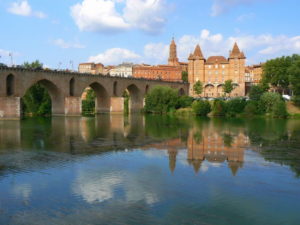
The principal access into the town is via the medieval Pont Vieux that spans the broad river Tarn. Commenced in the 12th century, the once-fortified bridge took 200 years to complete due to the frequent violent episodes during those times. The destruction of the town’s fortifications was ordered by Cardinal Richelieu in 1629. These were replaced by boulevards, beyond which the town was able to expand. The town suffered further persecution after the revocation of the Edict of Nantes in 1685, since the town refused to give allegiance to the Catholic King, Louis XIV.

The most famous son of Montauban was the 19th century artist, Ingres. The Musée Ingres now occupies the 17th century former Episcopal palace, which itself was once the castle of the Counts of Toulouse. An underground chamber in its oldest portion was known as the Hall of the Black Prince (Salle du Prince Noir), harkening back to the days when Montauban was ceded to the English in1360, until they were expelled by the inhabitants in 1414.
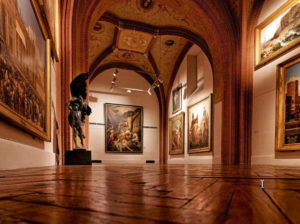
The museum is reputed to hold the world’s largest collection of Ingres paintings. A number of these were works and personal memorabilia donated by the artist to the city of his birth. The museum also has sculptures by another son of Montauban, turn-of-the-century sculptor Antoine Bourdelle, as well as art from other periods and collections of antiquities, including some fine Greek vases.
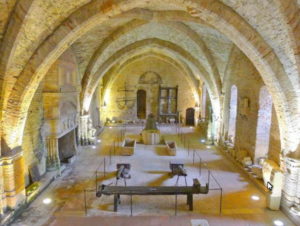
Note that the museum is currently undergoing a major restoration program, so check on the website if you’re planning a visit.
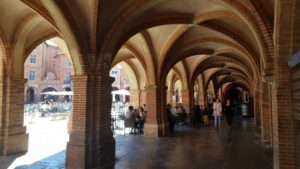
Typical of all bastide towns, Montauban has a fine central double-arcaded square, the 17th century Place Nationale. It’s regarded as one of the most beautiful squares in France, with striking pink brick facades on its three-storey townhouses above the arcades.
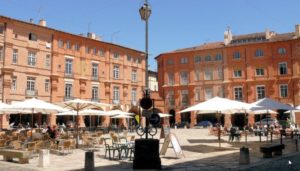
Numerous cafes, bars and restaurants occupy the spaces under the arches, whose tables spill out onto the square. A small market takes place here every morning.
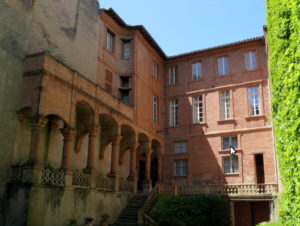
This elegant town has numerous impressive Neoclassical buildings such as the Musée Victor Brun, now the natural history museum, the Prefecture, housed in a former palace built of the local pink brick and creamy stone, as well as courtly mansions such as those along rue de la Comédie, the Hôtel Mila de Cabarieu on rue des Carmes, and the stately Theatre Olympe de Gouges.
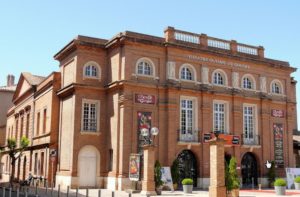
There are also numerous delightful squares, many of which have sculptures by Bourdelle.
All of the town’s former religious buildings, such as abbeys, seminaries and convents, have been adapted for new uses. One of these is the four star Hotel Abbaye des Capucins and Spa.
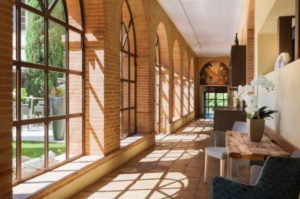
This huge complex, a listed historic monument, has spacious rooms, delightful courtyard gardens, a pool and an excellent restaurant.
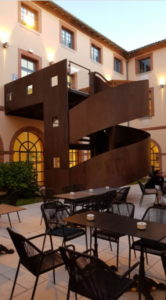
It’s a sensitive and atmospheric conversion that left many original features intact. In a perfect location for exploring the town, it’s highly recommended.
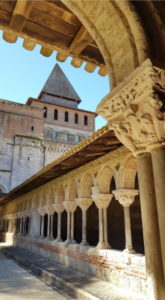
One of France’s most impressive medieval masterpieces is just 20 minutes away from Montauban. The Abbey of Moissac is a UNESCO World Heritage Site, and has been a stop on the pilgrimage route to Santiago de Compostela since the 11th century. The Abbey was a Benedictine and Cluniac monastery and is famed for its Romanesque sculpture, particularly around the tympanum above the portal, representing the apocalypse in the Book of Revelation.
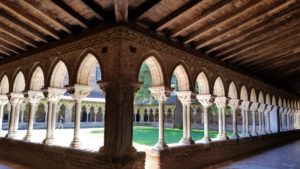
According to legend, the original Abbey was founded by King Clovis to celebrate a victory over the Visigoths in 506, although historic records show is was established by the Bishop of Cahors in the mid 7th century. Sacked by a succession of Moors, Norsemen and Arabs of al-Andalus, then looted by Norman pirates and Hungarians, the current building dates from restoration and reconstruction works that started in the 11th, going through to the 12th century. Monastic life ended at the French Revolution, but the cloister and the church itself remained intact and still in use.
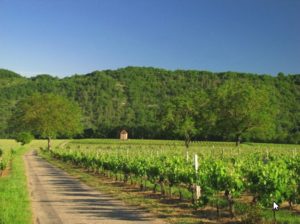
North of Montauban, lining the clay-limestone slopes of the beautiful Aveyron Valley, are the vineyards of the Coteaux et Terrasses de Montauban. Here grow a wide variety of grapes, including Merlot, Syrah, Gamay and Cabernet Sauvignon. Many of the caves (cellars) in Montauban offer tastings.
An interesting aside is that during World War II, Leonardo da Vinci’s ‘Mona Lisa’ was briefly hidden in a secret vault behind one of the wine cellar/caves in Montauban.
As well as fine poultry, notably duck, one of the great gastronomic treats of Montauban is that it’s located in a foie-gras region. This delicacy is offered in virtually every restaurant, and can be bought in pots and cans as take-home souvenirs.

The local cheese is Cabécou Autan, a creamy goat’s cheese, with its own distinctive pungency, and with a faint hazelnut flavour. And what French region is without its own specialty bread? The “Mountalbane” is a local brioche infused with orange blossom water, rum and vanilla, garnished with sugar and candied, then wrapped in pleated parchment paper.
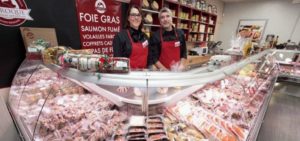
Steeped in history, with its beautiful scenery, great cuisine, excellent regional wines, and a glass of local Armagnac, it’s easy to understand why the Lot-et-Garonne holds an enormous attraction for visitors!
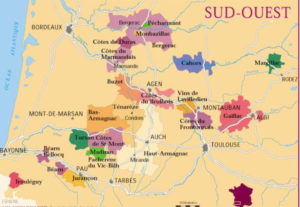


Lovely, Cheryl ~
I spent a week in Montauban in 1992 after the winter Olympics in Savoie. What a charming town surrounded by beautiful farms and villages. Your post makes me want to go back! Thank you for the sweet reminder.
I hope you and Brooks are well and traveling someplace cool during these warm days in the northern hemisphere.
Cheers,
Suzanne
It’s a lovely place , interesting fact ,there is a secret street hidden under cellers it was bricked up I believe ,,,,,,,,I’ve been down there very strange place this was in my teens 35 years ago , I’ve been searching can’t find any info if you can find any please let me know thanks
Hi David,
An interesting story! The only thing I know of anything relating to “secret” underground spaces in Montauban is that during WW2, the ‘Mona Lisa’ was hidden in a wine cellar for a while, for safe-keeping. As the town has suffered from various wars etc., from the Albigensian wars, the Inquisition, Huguenot rebellion etc., I wouldn’t be at all surprised that there were indeed secret passages, underground streets etc. built during any one of those turbulent times. A fascinating place indeed, and well worth spending a day or two.